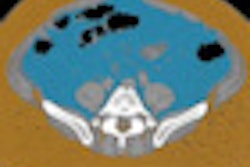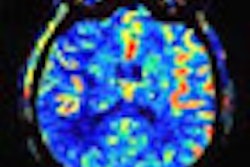Owing to its ability to detect noncalcified plaque, contrast-enhanced coronary CT angiography (CTA) may be a more suitable screening tool for assessing cardiovascular risk in African-Americans than coronary artery calcium scoring studies, according to a study published online June 28 in Radiology.
In a study of 301 African-American and white patients, contrast-enhanced CT angiography revealed that more African-Americans had noncalcified plaque, even though calcium scoring on CT showed a higher prevalence of plaque in the coronary arteries of white patients. African-Americans also had larger amounts of noncalcified plaque, according to the research team led by Dr. Joseph Schoepf of the Medical University of South Carolina.
The increased rate of noncalcified plaque may be one explanation for why African-Americans, despite having less coronary artery calcium, are more likely to be diagnosed with heart disease and are at greater risk of death from heart disease than white adults, according to the authors. In 2007, African-American men were 30% more likely than non-Hispanic white men to die from heart disease.
The study group was evenly split between African-American and white subjects, and the mean age was 55. One-third of the group was male. All patients received both calcium scoring with CT and contrast-enhanced coronary CT angiography.
Calcium scoring showed that 45% of white patients had calcified plaque, compared with 26% of African-Americans. However, coronary CTA demonstrated that 64% of African-Americans had noncalcified plaque, compared with 41% of white patients. Furthermore, African-Americans had a median volume of noncalcified plaque of 2.2 mL, compared with 1.4 mL for white patients.
As a result, the use of calcium scoring as a screening tool for African-Americans should be re-examined because these studies may not reflect the true extent of cardiovascular disease, according to the researchers.
While Schoepf acknowledged in a statement that coronary CTA exposes patients to ionizing radiation, he said that the effective dose of this procedure has been considerably reduced over the past few years. That makes it a viable screening option, assuming other prerequisites for a successful screening are also met, according to Schoepf.




















